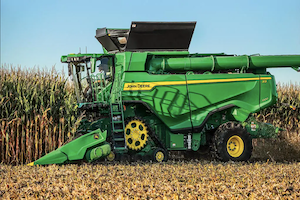As agricultural producers prepare for harvest, they know the importance of taking precautions to minimize spoilage. This involves properly preparing grain bins ahead of the harvest, and taking the time to prevent loss during the storage process. Now, the Iowa State University (ISU) Extension and Outreach is highlighting three grain storage principles that may help harvesters.
Store Clean Grain
Ideally, agricultural producers should use proper combine settings to reduce grain damage, as well as the collection of foreign materials. The grain should be thoroughly cleaned, and the drop height in the grain system should be minimized. This can be done through the use of products such as cushion boxes which can limit grain-on-grain contact.
Store Dry Grain
Grain storage moisture content recommendations should always be followed. Fifteen percent is typically recommended for corn grain during the winter, while 13% is best when it is stored past the spring and into the summer. Soybeans have a recommended moisture content of 13% in the winter, and 11% if it is being stored beyond spring.
Store Cool Grain
Grain should be cooled below 40 degrees Fahrenheit in order to reduce the chances of damage from insects. A cooling fan can be used to keep grain at an optimal temperature. Aeration cycles should be conducted throughout the storage period to maintain the grain’s temperature. When aeration fans are not in use, they should be sufficiently sealed to prevent moist air and insects from entering the grain.
Every other week, agricultural producers should check their grain for insect activity and any signs of spoilage, such as crusting or musty odors. More information on grain storage can be found by visiting the ISU Extension and Outreach website at crops.extension.iastate.edu.
